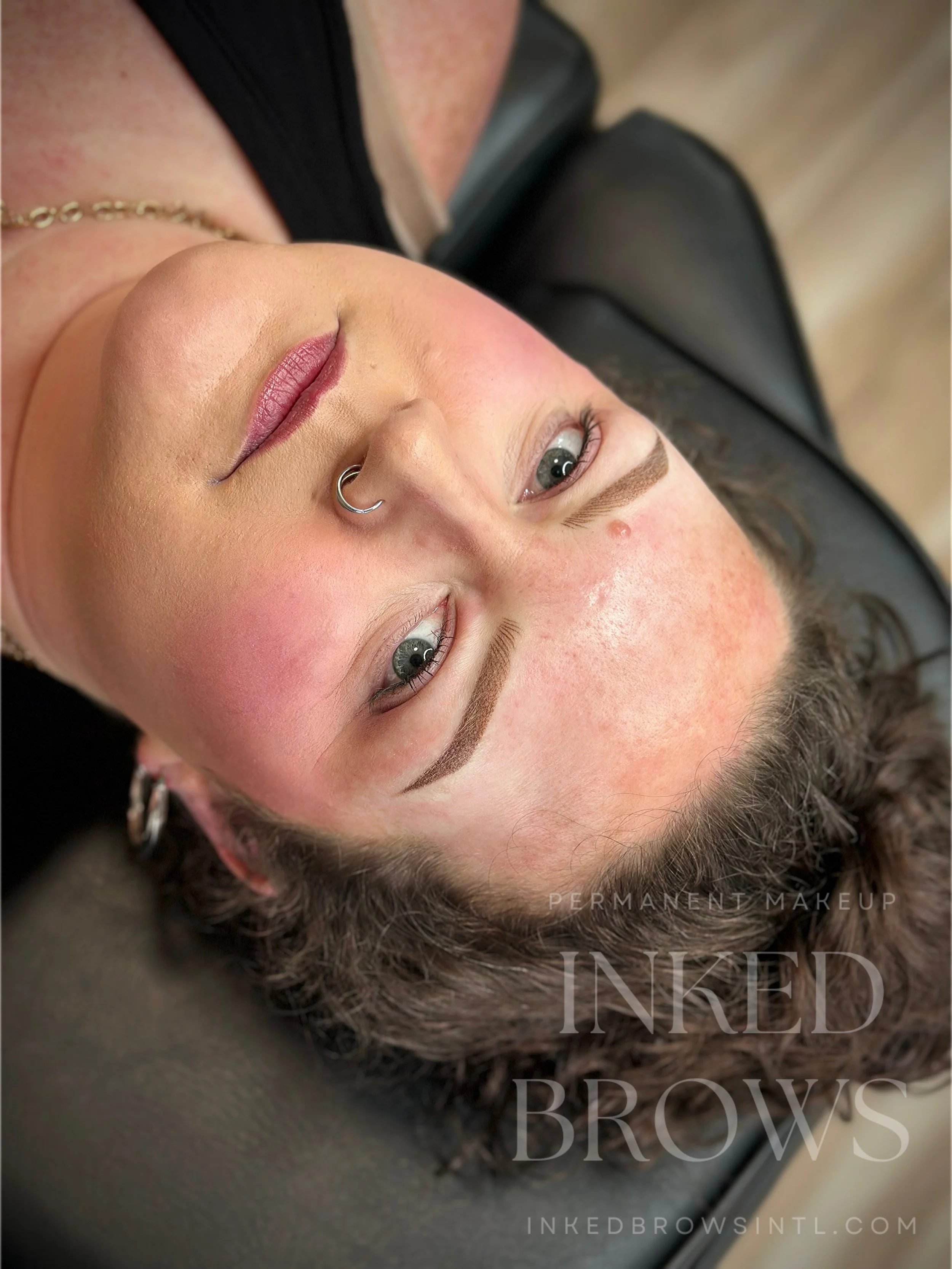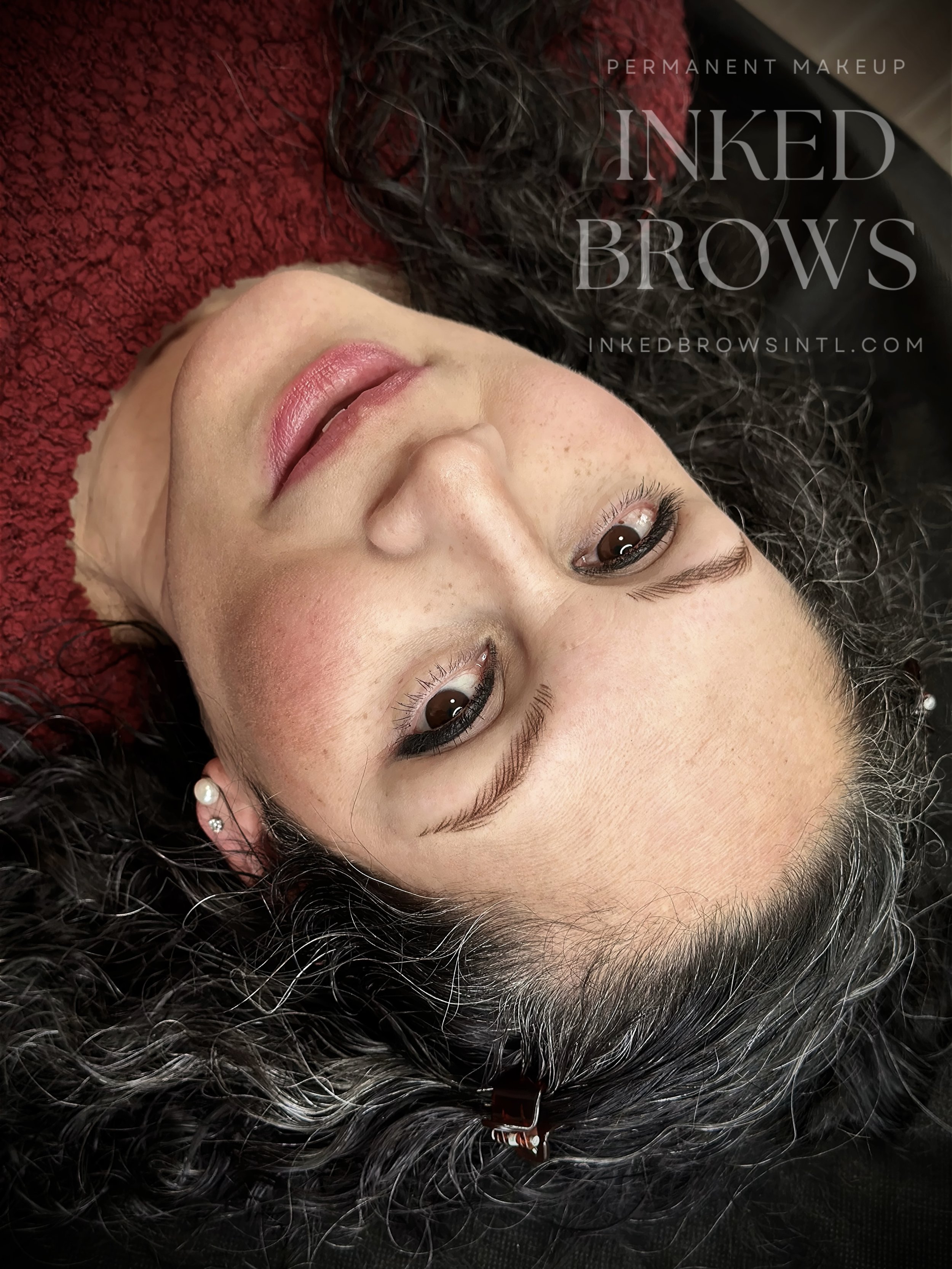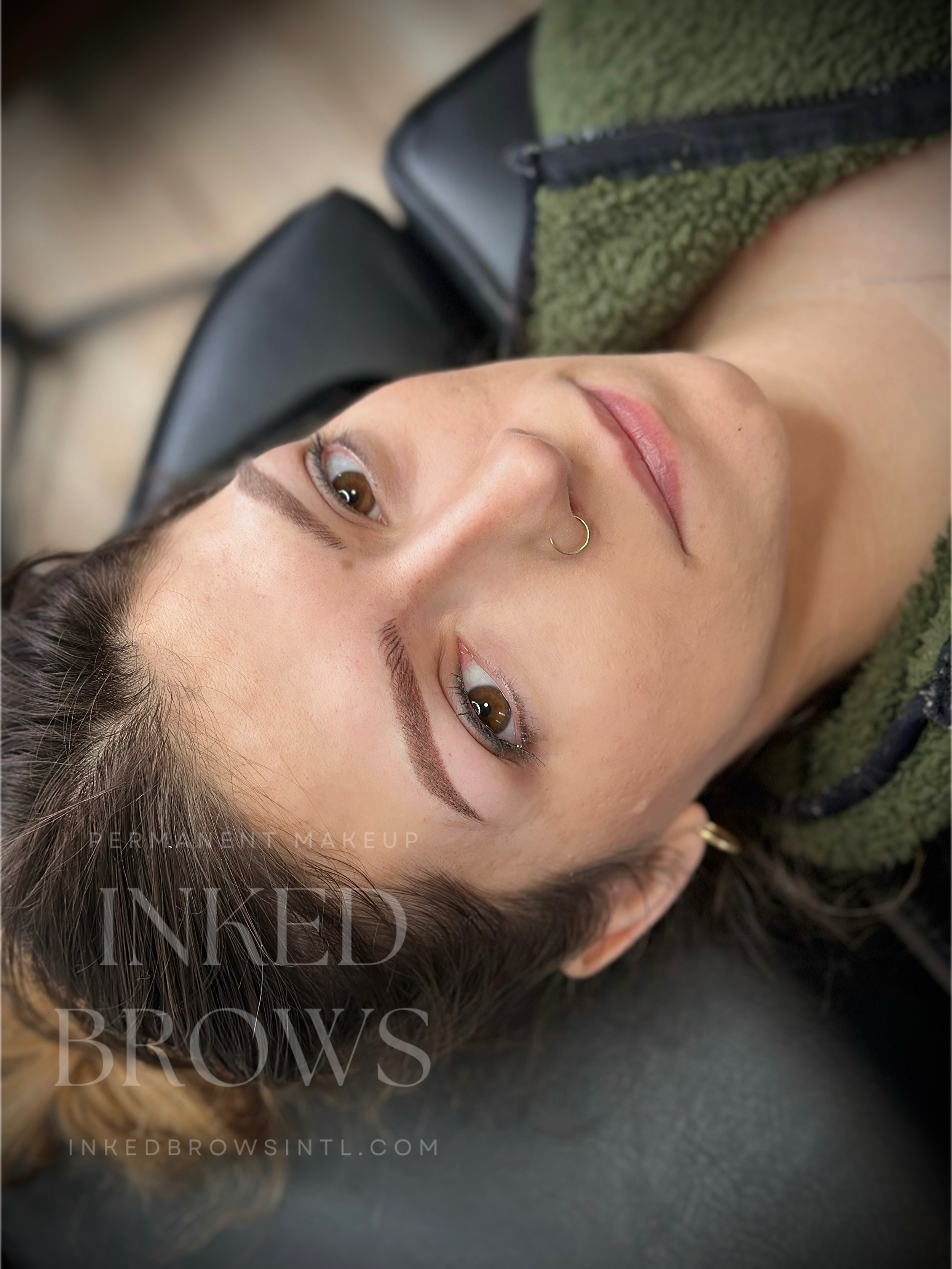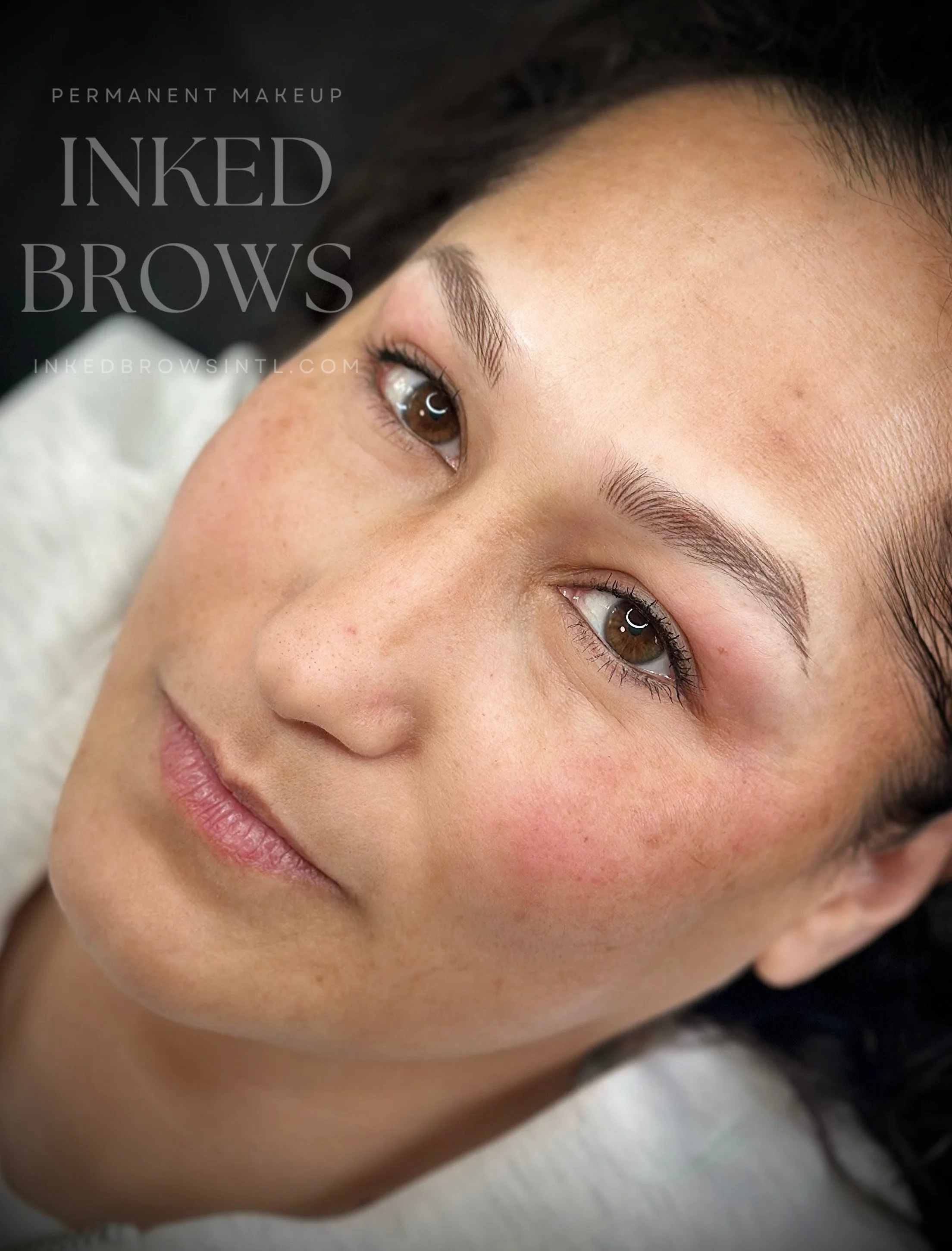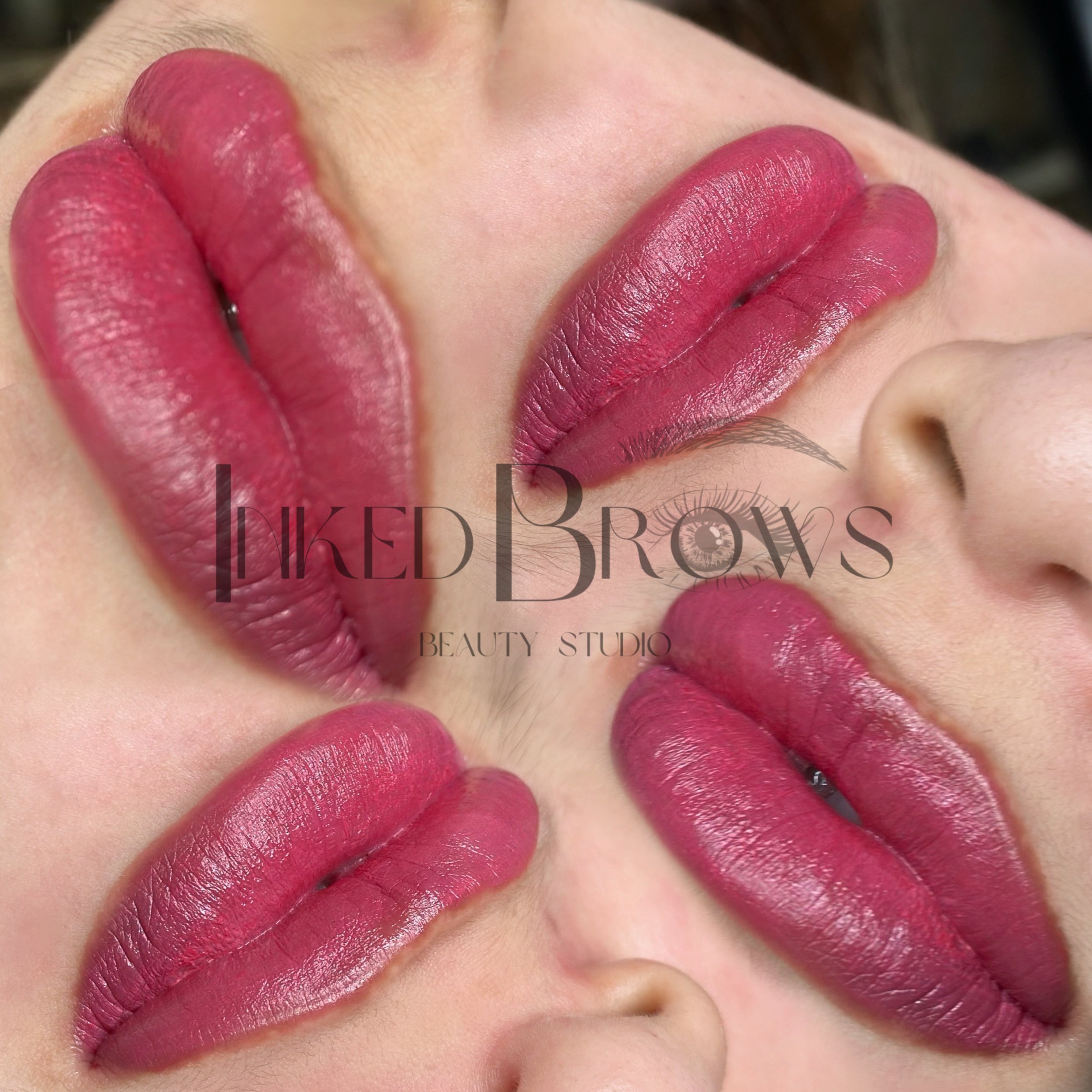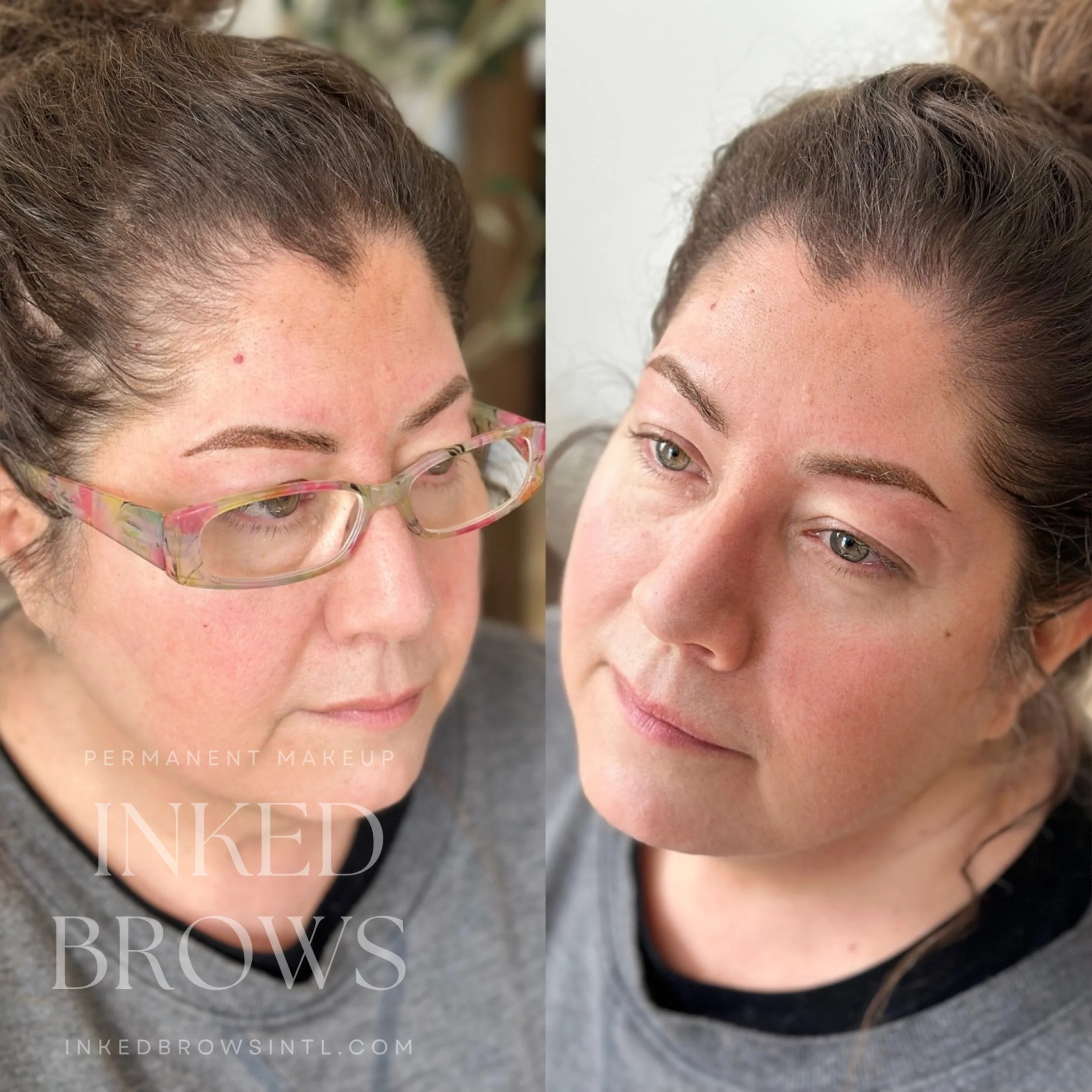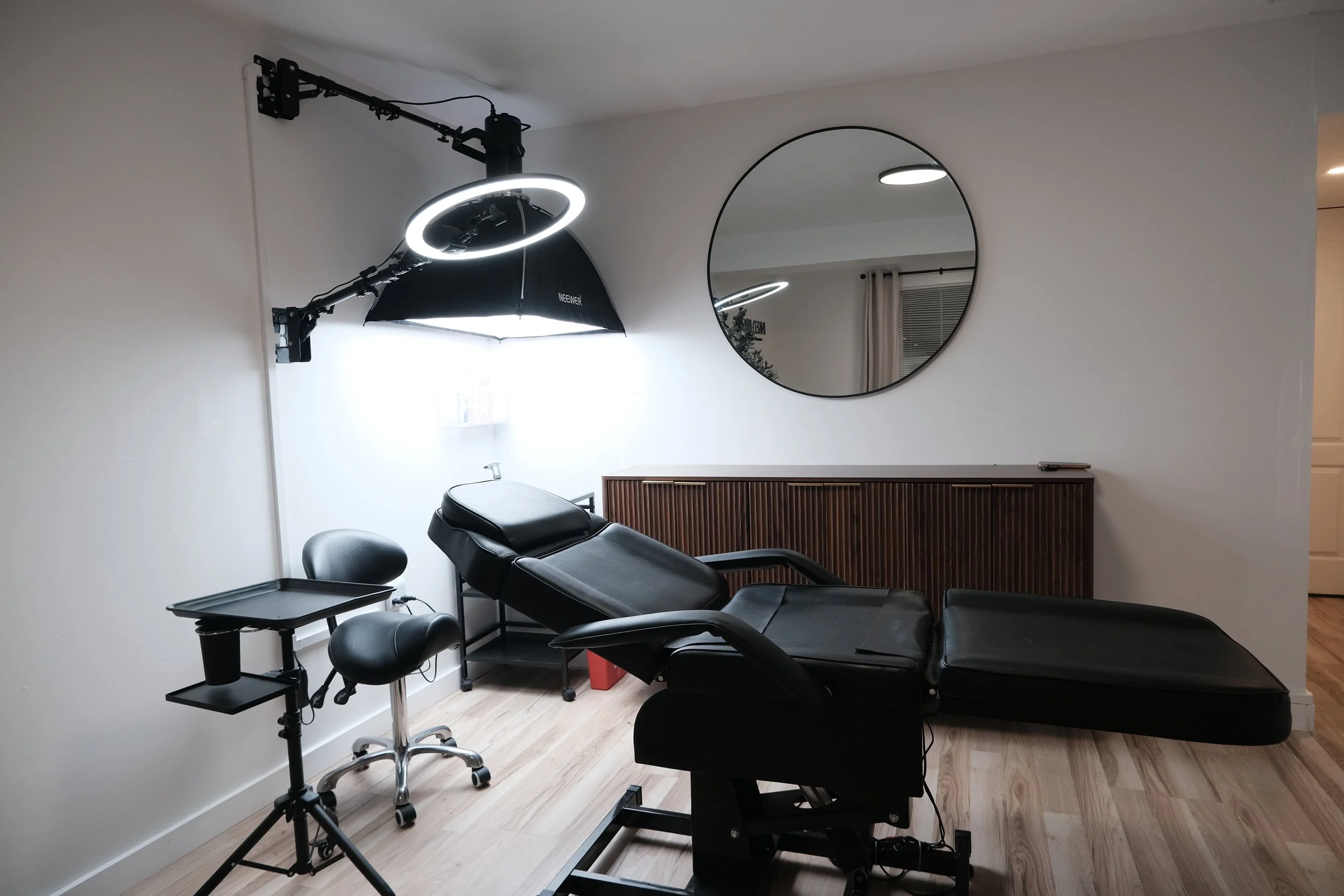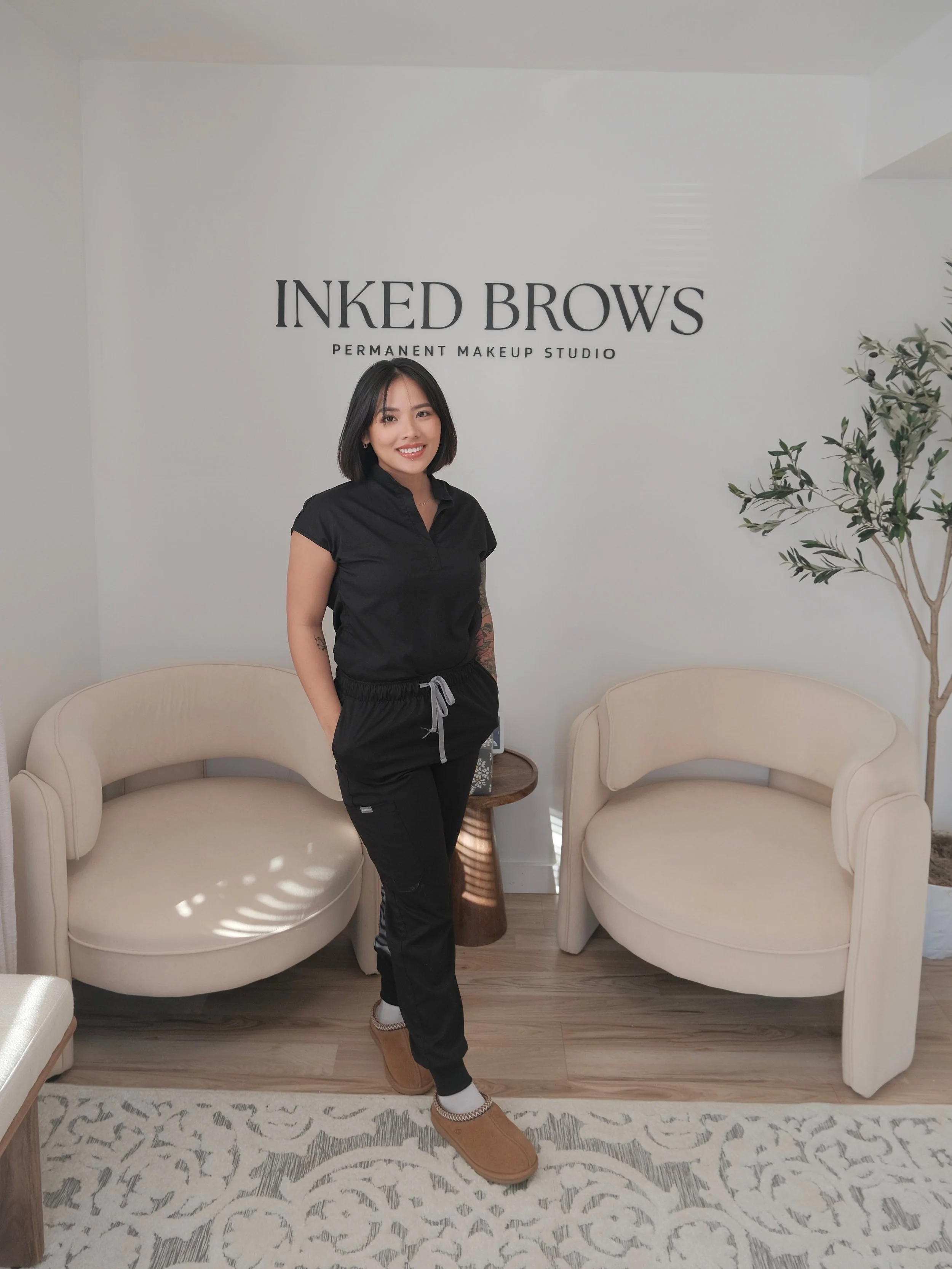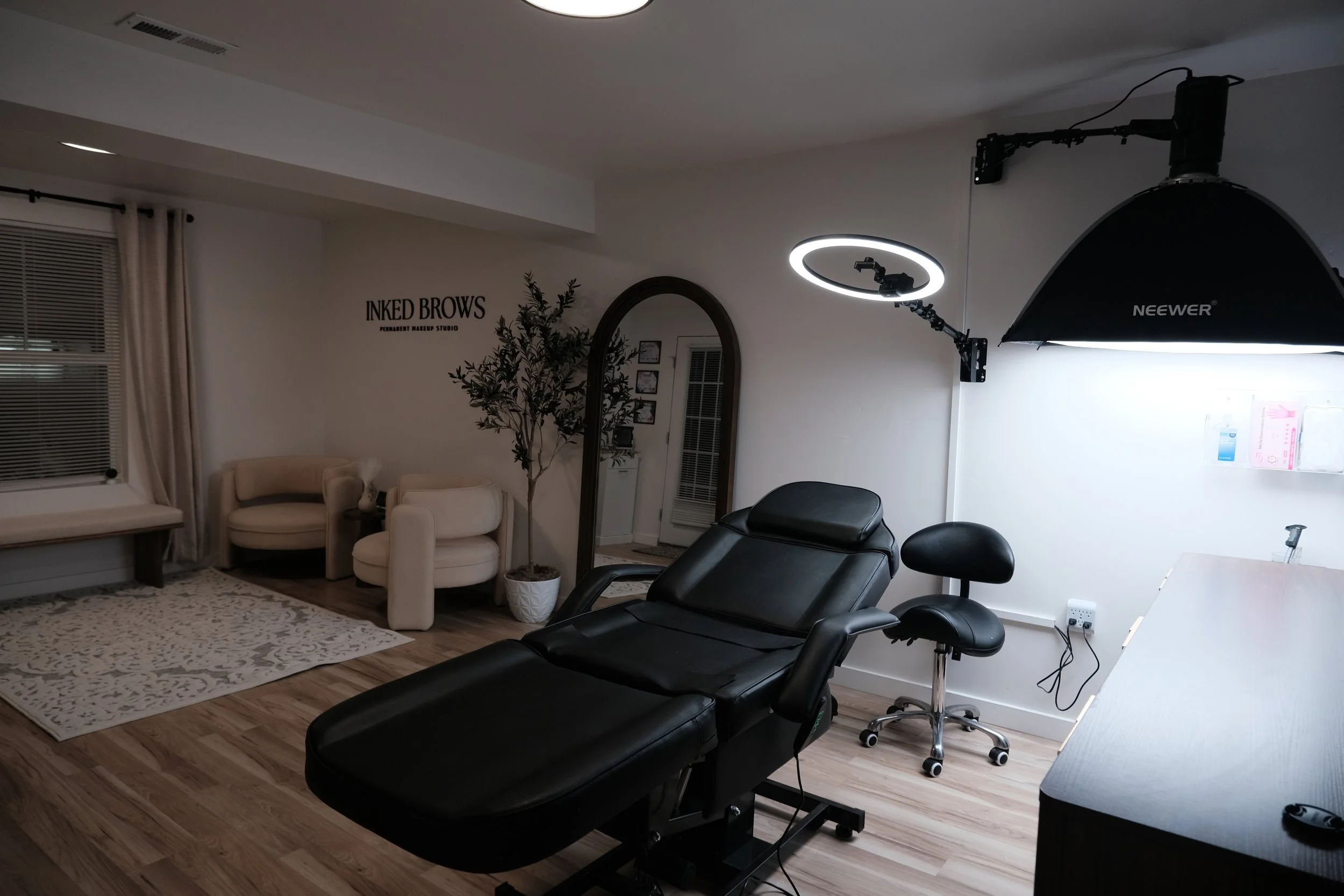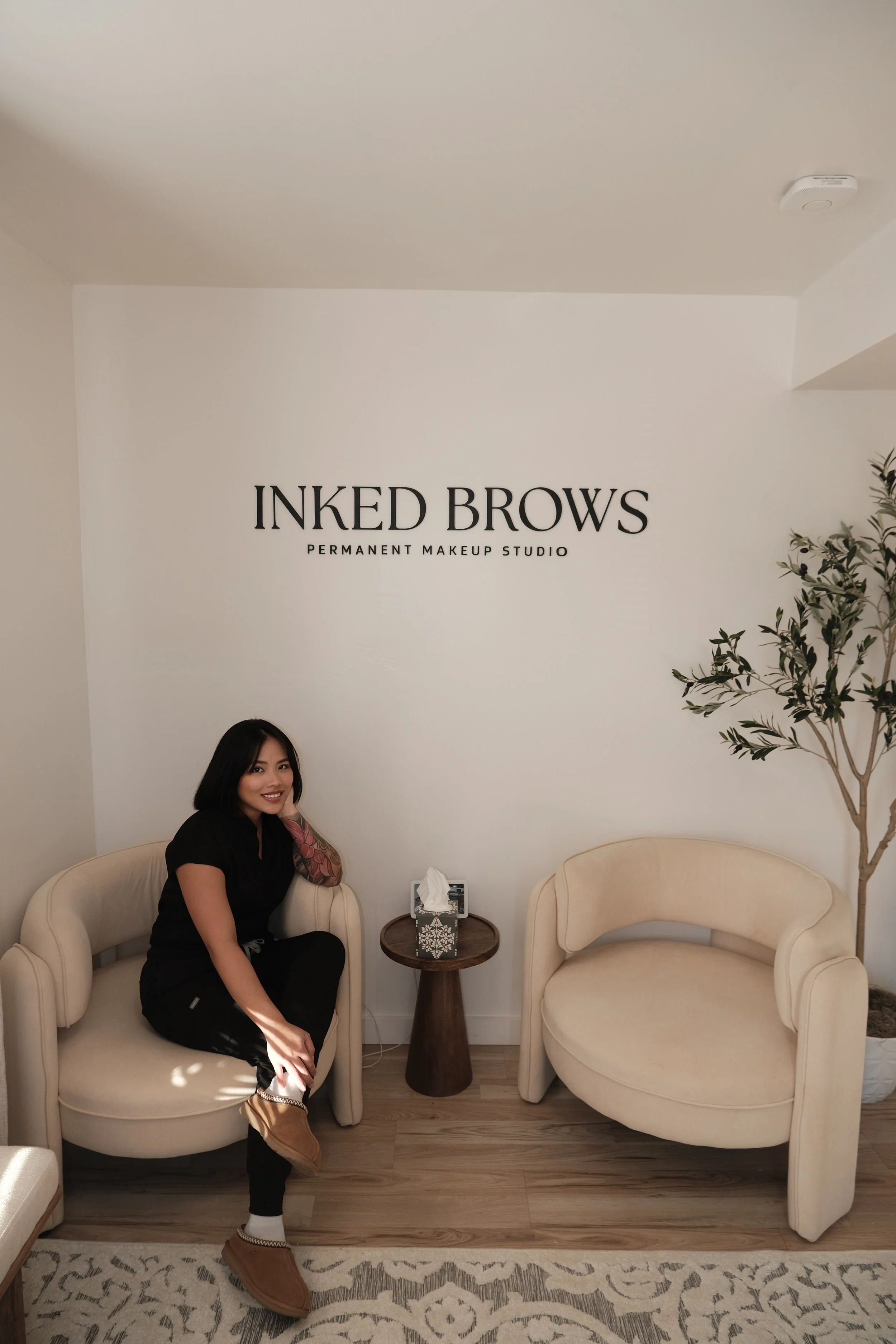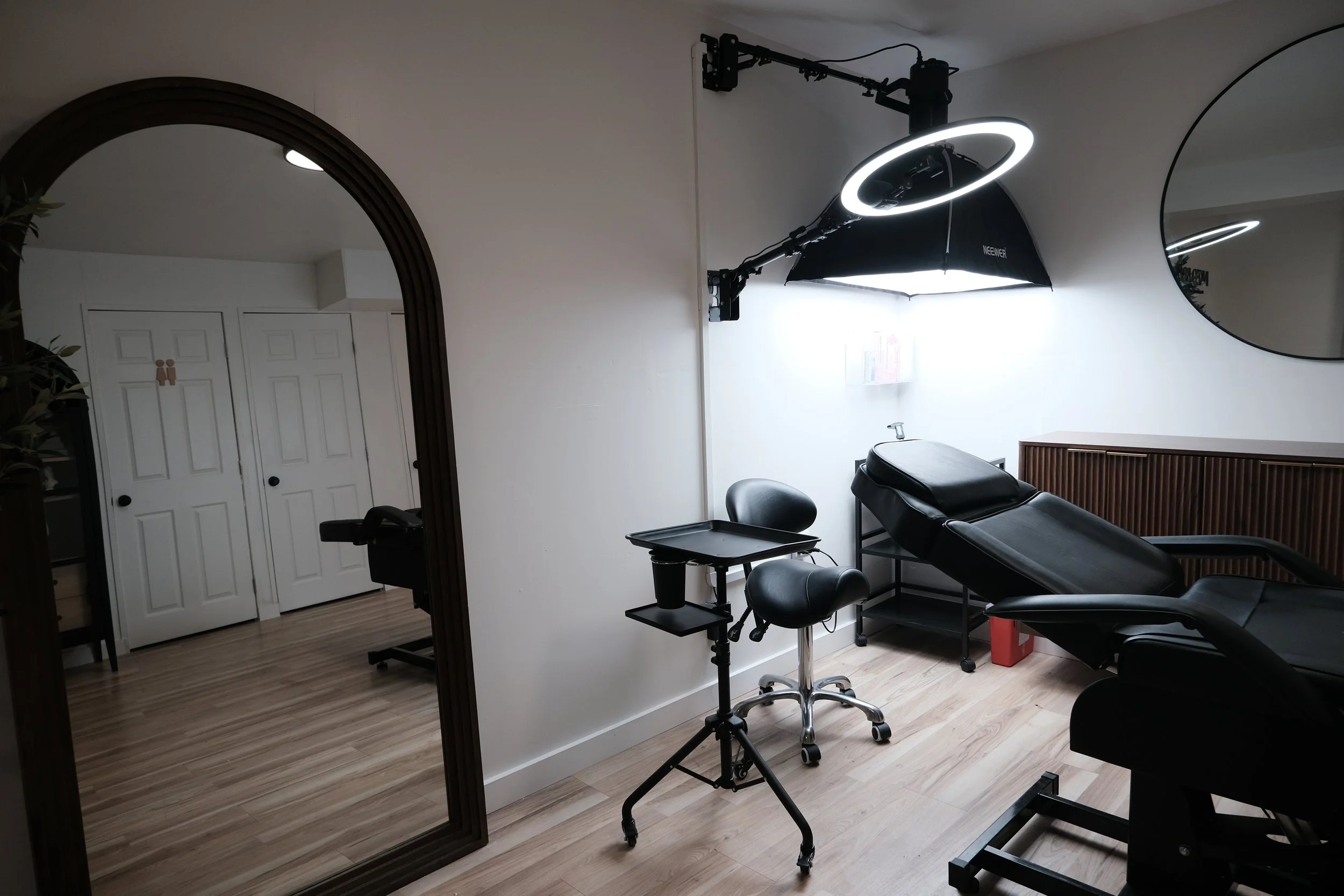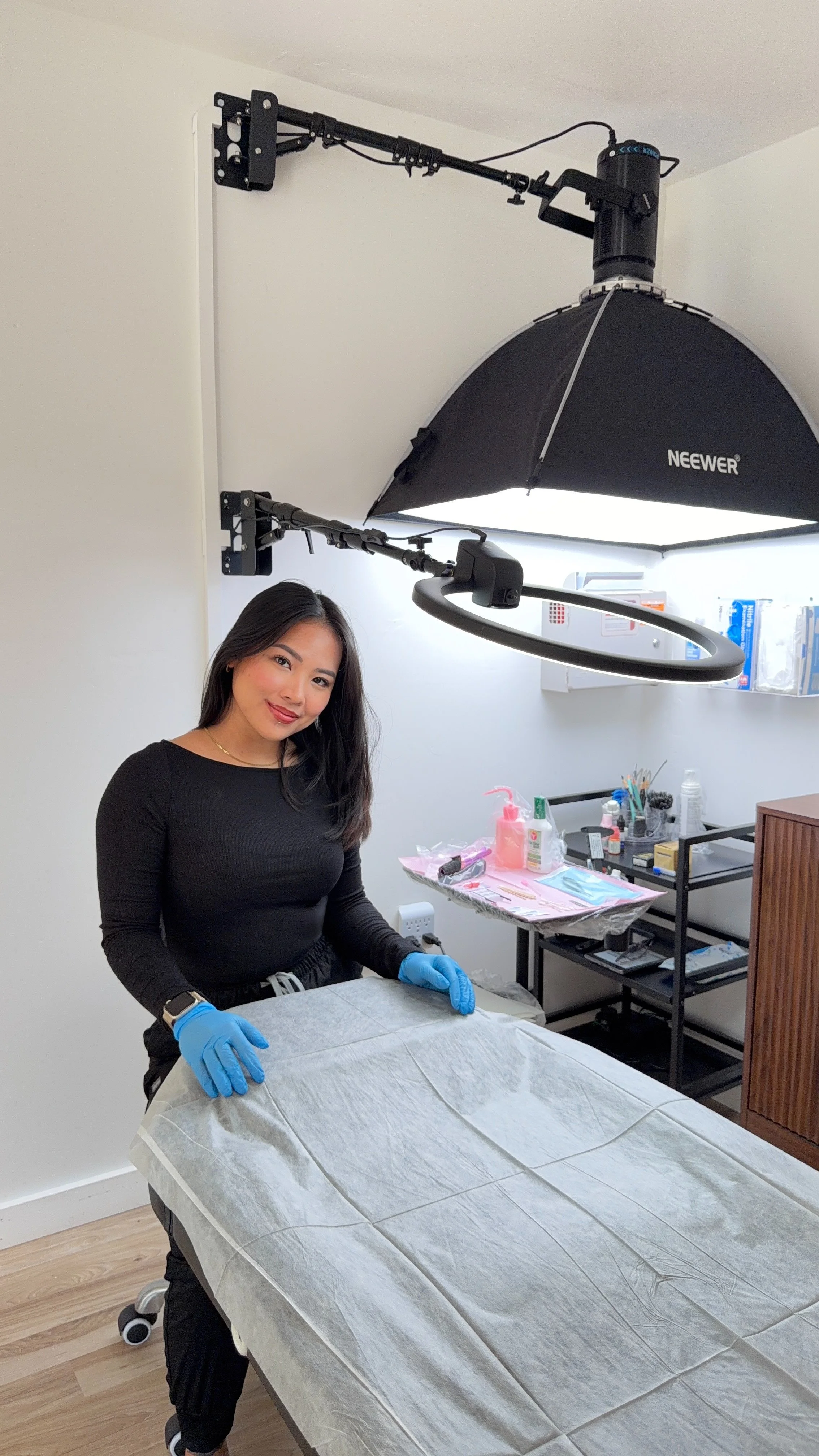inkedbrows
PERMANENT MAKEUP BY JONAH MAE
Hello! I’m Jonah Mae, an internationally certified permanent makeup artist with expertise across three countries. I specialize in enhancing natural beauty through microblading, nano brows, ombre powder brows, lip blush, and eyeliner tattoos.
WHAT SUITS ME BEST?
-
Nano Brows is a more advanced technique that uses a fine, single-needle machine to create hair-like strokes that mimic natural eyebrow hairs. The machine allows for more precision and consistency than traditional microblading.
-
Nano Fusion is a combination of the fine hair like strokes with a powdered shading effect for a bolder but still natural looking effect.
-
Powder Brows (also known as Ombre Brows) is a shading technique that creates a soft, powdered finish. The technique uses a machine (similar to nano brows) to apply a gradient of color, starting lighter at the front and darker at the tail of the brow. This method offers a more defined and filled-in look than nano brows or microblading.
-
Combination Brows typically use microblading for the hair strokes and a machine for the powder shading part.
-
Microblading is a manual technique that uses a small blade to create hair-like strokes in the skin. It is one of the most popular eyebrow tattooing techniques, especially for those who want a natural yet defined look.
-
Eyebrow correction is a specialized PMU (Permanent Makeup) or microblading technique used to fix or improve the shape, symmetry, and color of eyebrows that have been poorly shaped, faded, or uneven. This corrective process helps restore, enhance, or completely redesign brows to create a more flattering and balanced look.
UNFORTUNATELY NOT EVERYONE QUALIFIES FOR EYEBROW CORRECTION
Let us create the look you’ve always dreamed of.
client reviews
frequently asked questionS
-
Martinsburg, West Virginia
As our studio operates from a private home, to ensure the security and privacy of our clients and staff, we will provide the location details only once your appointment has been confirmed. -
Yes I am certified in multiple countries including the United States.
-
Permanent makeup, also known as micropigmentation or cosmetic tattooing, is a technique in which specialized pigments are applied to the skin using a tattoo machine or a needle. The purpose of permanent makeup is to enhance or replicate traditional makeup, such as eyeliner, eyebrow shaping, lip color, and even scalp micropigmentation for hair loss.
The procedure is similar to getting a regular tattoo, but the pigment is designed to fade over time, lasting typically 1-5 years, depending on factors like skin type, sun exposure, and the area treated.Description text goes here
-
The level of discomfort varies from person to person, but most clients report minimal pain during the procedure. A topical numbing cream is applied to the area beforehand to reduce discomfort. While some people may feel a light scratching or tingling sensation, it's generally not considered highly painful.
-
PMU is considered semi-permanent. The results can last anywhere from 1 to 3 years depending on factors like skin type, sun exposure, and lifestyle. The second touch-up is highly recommended to finalize the color, shape and address any patchy area after first session. Touch-ups are recommended every 12-18 months to keep the color and shape fresh.
-
Sanitation in a permanent makeup (PMU) studio is critical to ensure the safety of both the client and the practitioner. Since PMU involves puncturing the skin with needles, it's important to follow strict hygiene practices to prevent infections, cross-contamination, and the spread of bloodborne pathogens like hepatitis or HIV. Here's a general overview of the sanitation process followed in a professional PMU studio:
1. Pre-Procedure Sanitation
Hand Hygiene: Both the client and technician should wash their hands thoroughly before the procedure. The technician will also use alcohol-based hand sanitizer or soap and water.
Client Disinfection: The area being treated (e.g., eyebrows, lips, or eyeliner) should be cleaned with a medical-grade antiseptic solution (like alcohol or chlorhexidine) to remove oils, dirt, and bacteria.
Personal Protective Equipment (PPE): The technician should wear disposable gloves, and depending on the procedure, may also wear a face mask and protective eyewear to reduce the risk of contamination.
2. Sterilizing Equipment
Needles and Blades: All needles and blades used for PMU are single-use and should be disposed of immediately after use. Reusing needles is strictly prohibited to avoid infection or cross-contamination.
Pigment Cups: Disposable, single-use pigment cups are used to hold the pigment during the procedure. They should not be reused.
Machines and Tools: Permanent makeup machines, handles, and other non-disposable tools should be disinfected after each use. These should be wiped down with hospital-grade disinfectant or sanitized using autoclave sterilization where applicable.
Disposable Barriers: Items like disposable covers, barrier films, or plastic wrap should be used to cover equipment that comes into direct contact with the client, such as the machine handle, chair, or work surface. These should be changed between clients.
3. Workstation Preparation
Disinfecting the Surface: All surfaces, including the treatment bed, chairs, and countertops, should be cleaned with a hospital-grade disinfectant before and after each session. Any surfaces the client will touch (like the armrests) should also be wiped down.
Organizing Tools: Ensure that all tools and supplies (disposable and non-disposable) are organized in a clean, sterile environment. Disposable gloves should be worn while handling all tools, and only tools in sterile packages should be used.
4. During the Procedure
Gloves: The technician must wear gloves at all times during the procedure. Gloves should be changed if they come into contact with non-sterile items, and they should always be discarded after each client.
Avoiding Cross-Contamination: The technician should avoid touching surfaces or anything outside the treatment area while performing the procedure. This includes refraining from touching their phone, door handles, or non-sterile items while still wearing gloves.
5. Post-Procedure Sanitation
After-Care Instructions: The client should be provided with written after-care instructions, which usually include instructions for cleaning the treated area, avoiding makeup or creams, and protecting the area from sunlight and moisture during the healing period.
Post-Treatment Cleanup: After completing the procedure, the technician should clean and disinfect the treatment area and any remaining tools. Used needles and disposable items should be placed immediately in a biohazard sharps container for proper disposal.
6. Waste Disposal
Sharps Containers: Used needles, microblades, and any sharp tools should go into sharps containers. These are puncture-resistant and safe for the disposal of sharp objects.
Biohazard Waste: Any items that come in contact with blood or bodily fluids (e.g., gloves, gauze) should be placed in a biohazard bag for disposal according to local health regulations.
7. Studio Maintenance
Regular Cleaning: All non-disposable surfaces should be wiped down and disinfected at the end of each day, including the treatment bed, countertops, chairs, light fixtures, and other common areas. This helps ensure the studio stays hygienic for each new client.
Equipment Maintenance: Tools that are not disposable (such as tattoo machines) should be cleaned and sterilized at the end of each session. Regular maintenance and sterilization ensure the tools remain in good working condition and hygienic.
8. Certification and Training
Technicians should always be certified in bloodborne pathogen training, first aid, and infection control. This ensures that they understand the risks involved and the necessary precautions for keeping both themselves and their clients safe.
-
Yes but we only touch up our own work. If you have any previous work done by another artist, please email photos before booking to ensure that we are able to cover up or correct your old tattoo.
PREVIOUS WORK FROM OTHER ARTIST IS CONSIDERED “BROW CORRECTION” and the fee is different.
-
Yes, when performed by a skilled technician, PMU can look very natural. Techniques like hair-stroke eyebrows (NANO/MICRO BLADING TECHNIQUE ) are designed to mimic natural features. The color and shape can be customized to suit your face and preferences.
-
It’s important to communicate with us before, during and after the procedure to avoid this from happening.
Please check our work and style at instagram, facebook and our website. Fresh work and healed are not the same. Expect your eyebrows to heal lighter. Pigments fade after your skin heals and will look softer and lighter under the skin. Please keep in mind that I PERSONALLY DON’T DO UNNATURAL EYEBROWS.
Set a realistic expectation, if you’re planning on getting a permanent makeup. I will do my best to give you the best possible result but you need to consider that us human has natural facial asymmetry. When looking for the before and after picture look for the before eyebrows that look similar to yours. (the amount of hair, the thickness of the hair, skin color, skin texture, brow bone structure, lip size and color) because we are all different and will have different results.
-
While there's no conclusive evidence that PMU is harmful during pregnancy or breastfeeding, it is typically recommended to avoid PMU procedures during these times due to hormonal changes, which can affect pigment retention. Always consult with your doctor before undergoing any cosmetic procedures during pregnancy or breastfeeding.
-
Like any cosmetic procedure, PMU carries some risks. These include infection, allergic reactions, uneven pigment application, or fading over time. That’s why it's essential to choose a qualified, professional technician, follow aftercare instructions, and be aware of your skin type.
